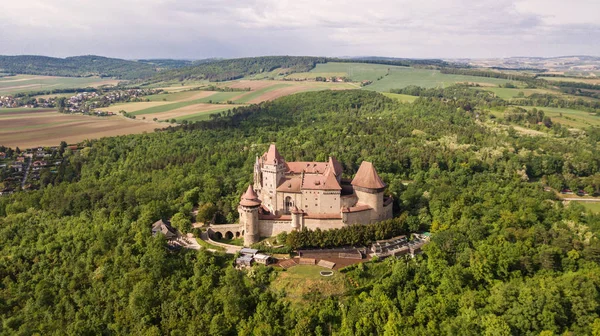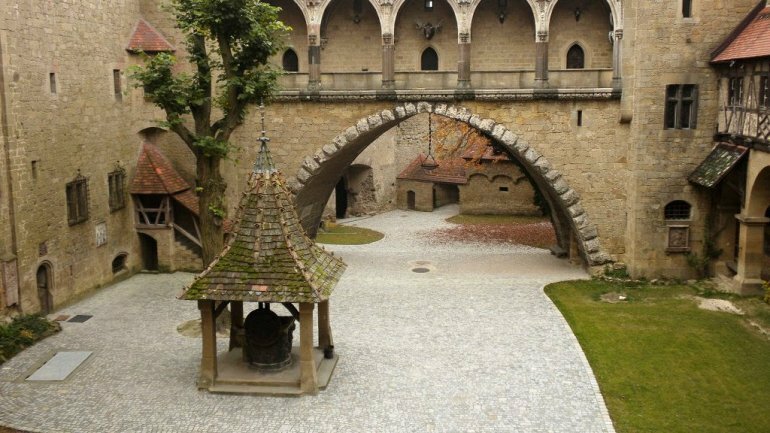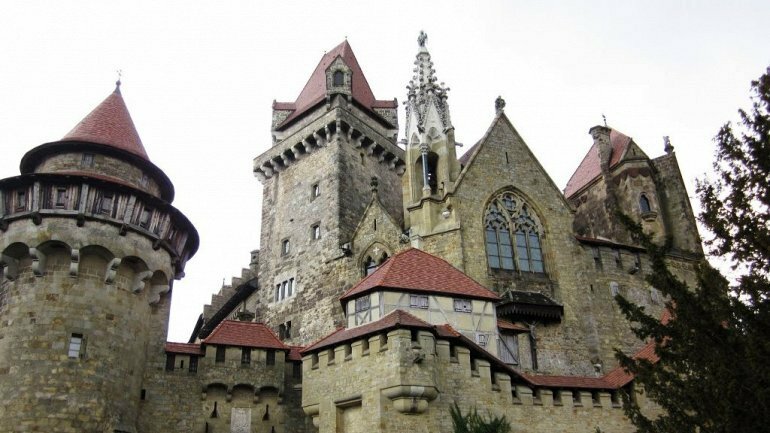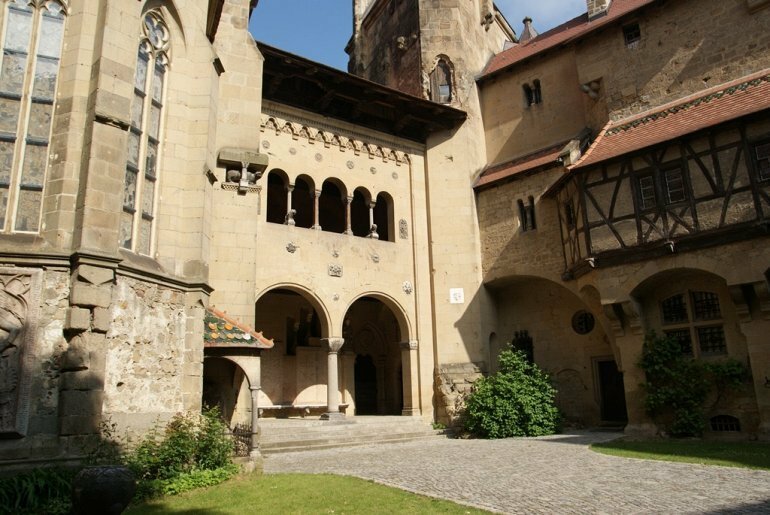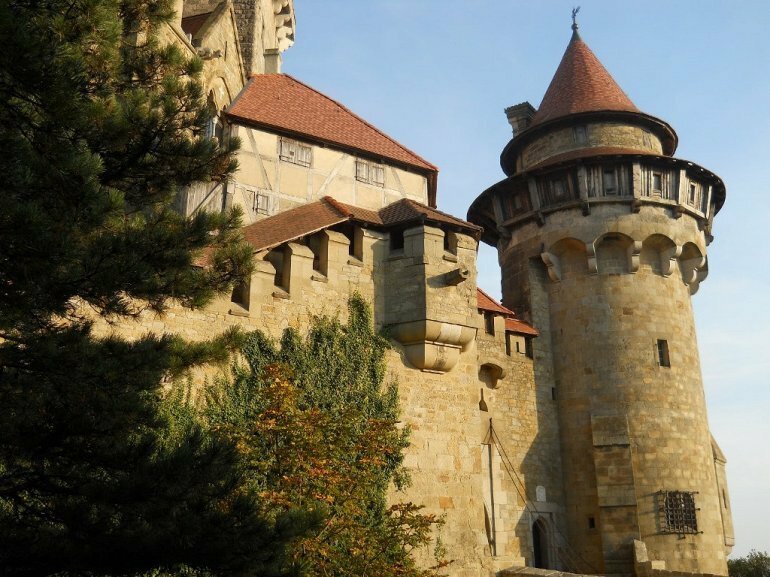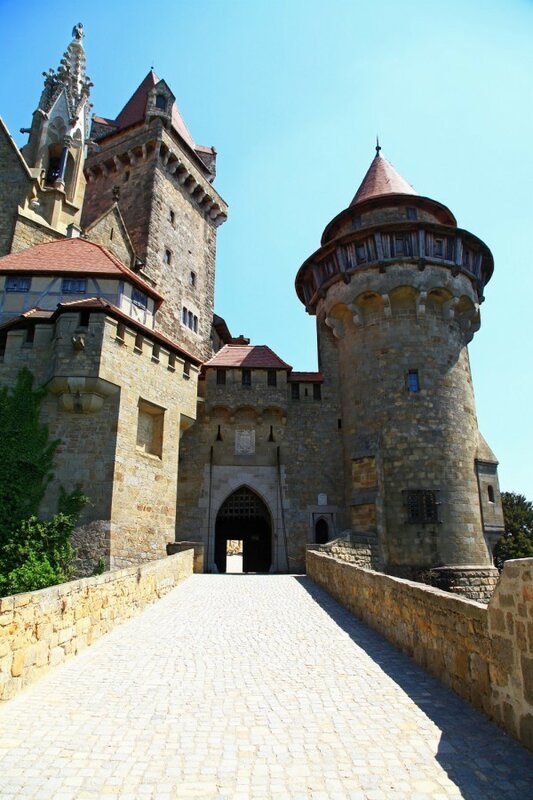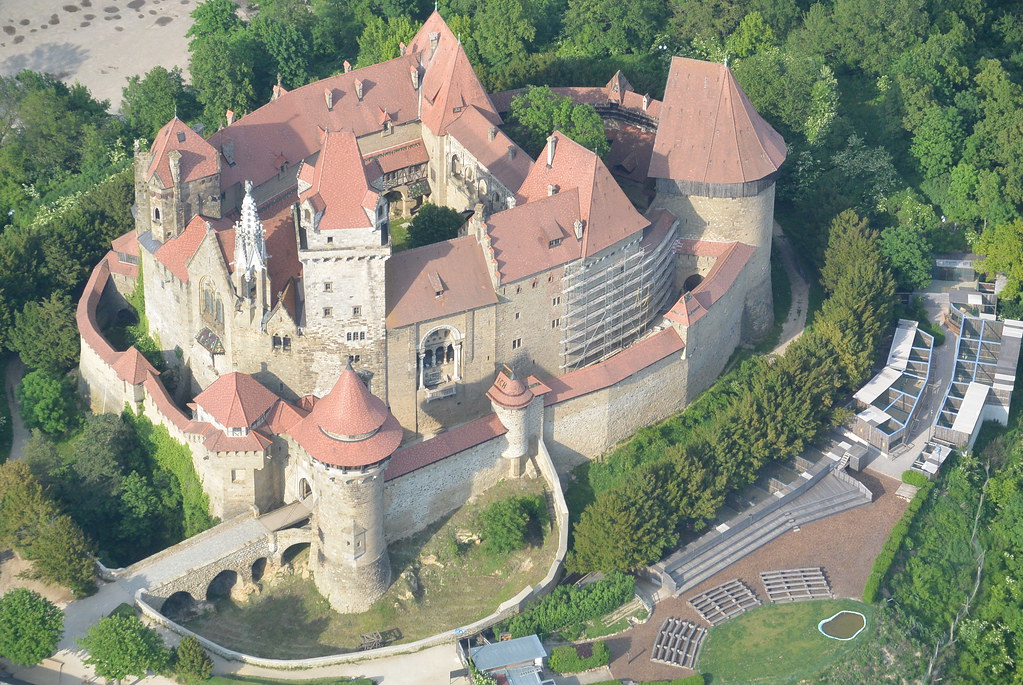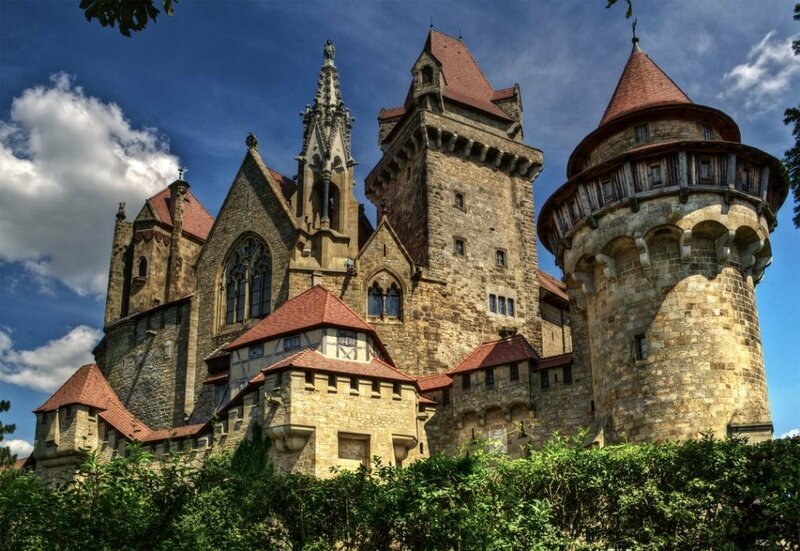
Burg Kreuzenstein is a castle near Leobendorf in Lower Austria, Austria. Burg Kreuzenstein is 265 metres (869 ft) above sea level. It was constructed on the remains of an early medieval castle that had fallen into disrepair and was then demolished during the Thirty Years' War. Intended to be a family vault for the Wilczek family, it was rebuilt in the 19th century by Count Nepomuk Wilczek with money from the family's large Silesian coal mines. Kreuzenstein is interesting in that it was constructed out of sections of medieval structures purchased by the family from all over Europe to form an authentic-looking castle. Thus, the castle can be considered both a 'neo-' and 'original' medieval structure. The castle is sometimes used as a location for films.
This castle is sometimes confused with the medieval castle Burg Liechtenstein, where the movie The Three Musketeers was filmed in 1993.
The castle is located just north of Vienna and the Danube on a rising above Rohrwald, directly above Leobendorf and between the towns of Korneuburg and Stockerau. The elevation is 266 m (AA), the height above the Danube about 100 metres (330 ft).
Close to Burg Kreuzenstein is a water gap in the Danube called Wiener Pforte ("Viennese Portal"), so that it allows a wide view of the current course of the river and the Korneuburger Becken ("Korneuburger sedimentary basin") upstream . Approximately opposite to Burg Kreuzenstein, on the south bank of the Danube, lies Burg Greifenstein castle.
The origins of Burg Kreuzenstein, like most castles in Lower Austria, date back to the 12th century. Originally built by the Counts of Formbach (now Vornbach, Bavaria), the castle passed into the possession of the Counts of Wasserburg through marriage. Through Ottokar II of Bohemia, the castle came into the possession of the Habsburgs, in 1278.
In July 1527, the Anabaptist preacher Balthasar Hubmaier was arrested under the pretext of causing riots in Mikulov, Moravia and transferred to Burg Kreuzenstein. He was interrogated there but refused to renounce his beliefs and was burned at the stake in Vienna.
Until the Thirty Years War, the castle had never been conquered but then it fell into the hands of the Swedish Field Marshall Lennart Torstensson, who, on his departure in 1645, blew up three parts of the building (some sources say four).
